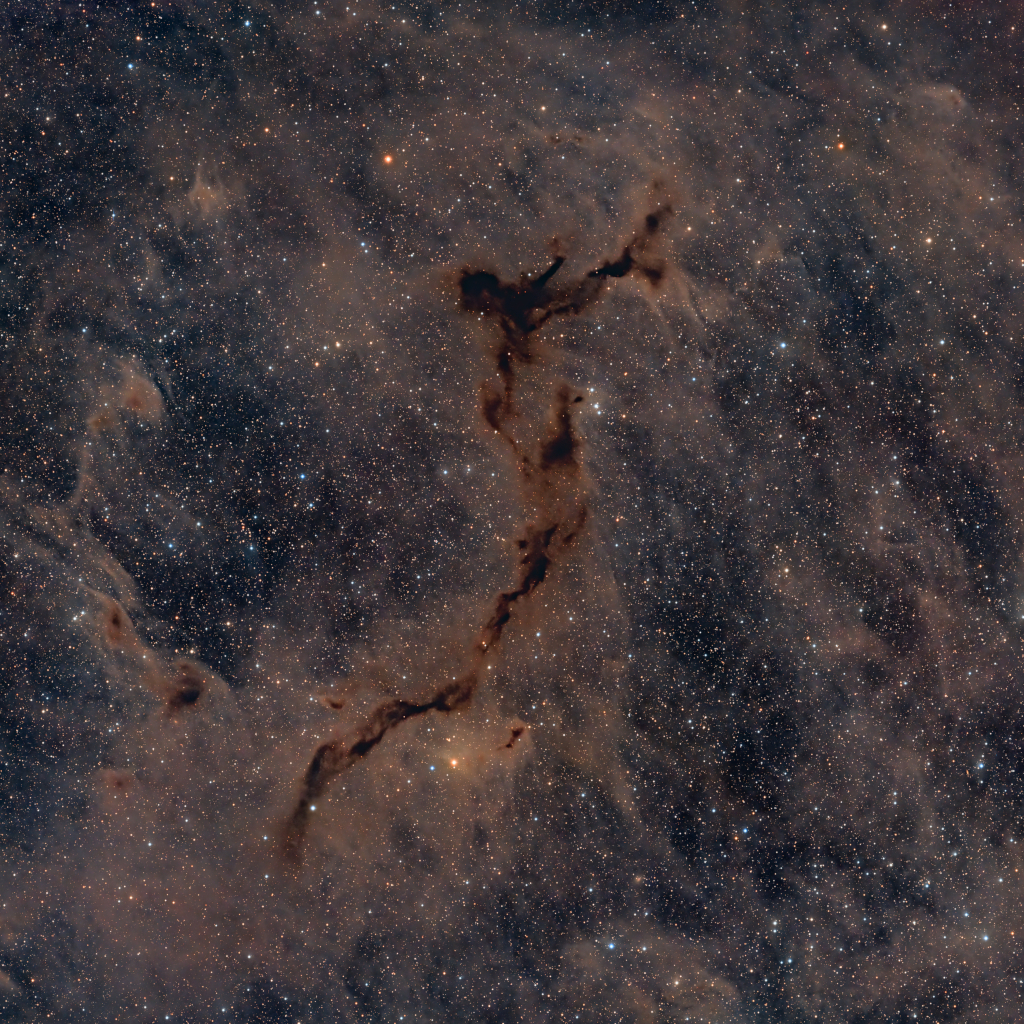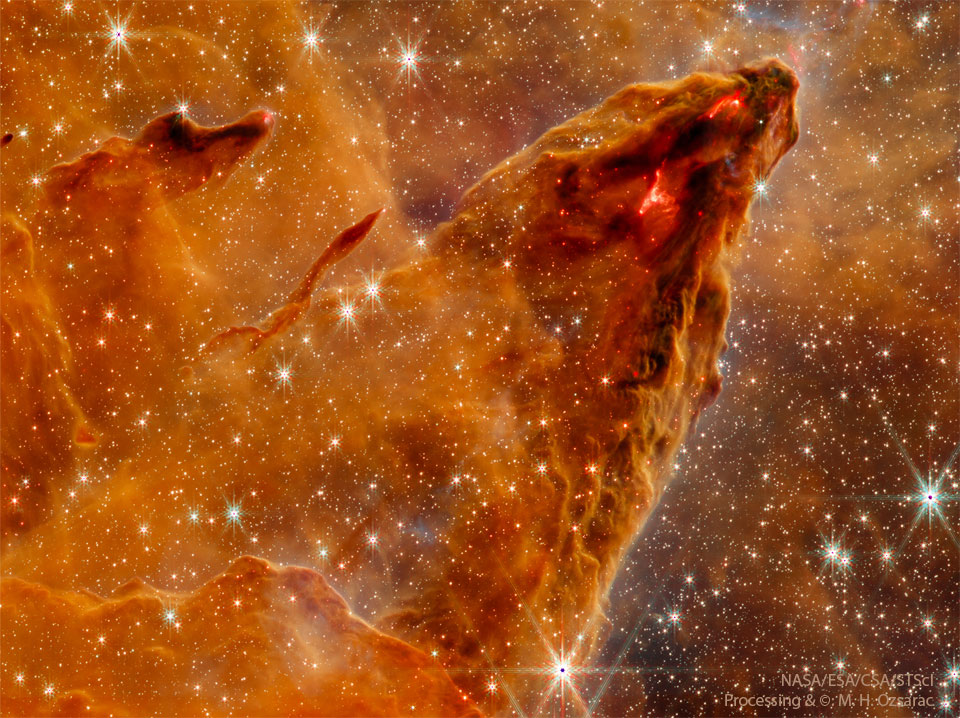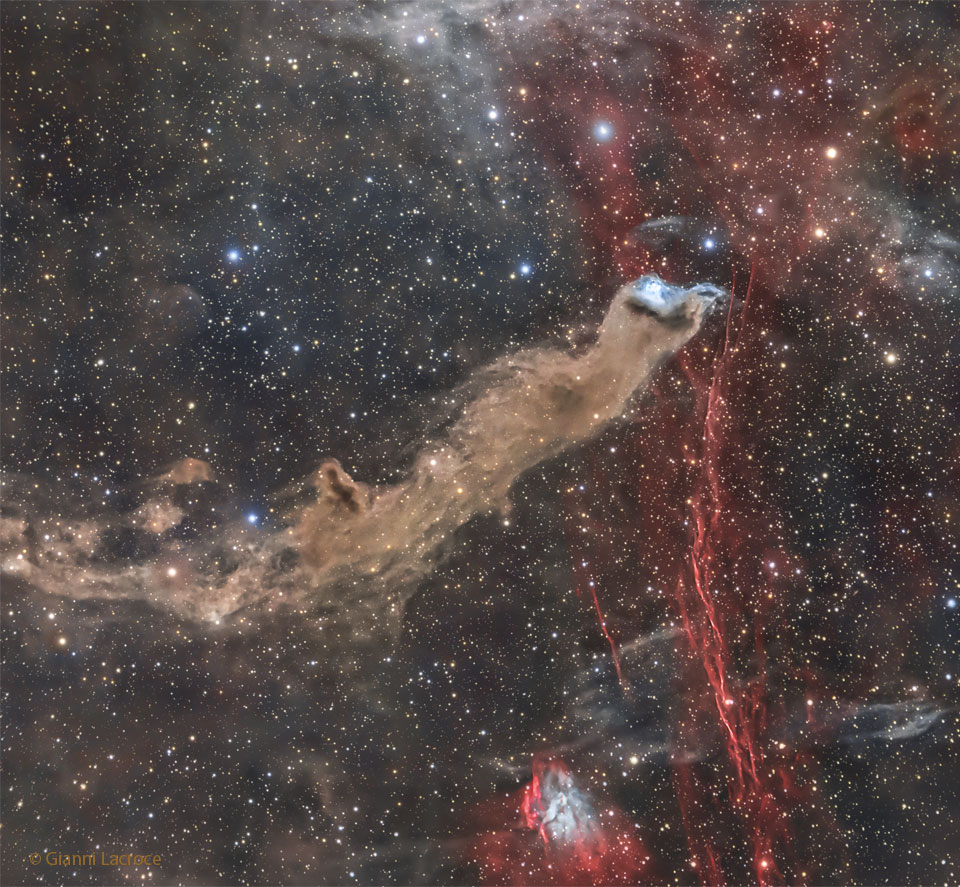
1999年06月04日:NGC 3603: 从诞生到死亡-(NGC 3603: From Beginning To End)--原图下载
Credit: Wolfgang Brandner (JPL/IPAC),Eva K. Grebel (U. Wash.),You-Hua Chu (UIUC),NASA
说明: 这张绝妙的哈伯望远镜照片,所显现的是银河发射星云NGC 3603附近天区的景象。在这个区域内,可以看到恒星的一生;从诞生到死亡的完整故事。让我们从恒星的诞生开始说吧!照片右方很显眼的发光氢气柱,暗示着新诞生的恒星,正要从它们诞生的緻密气态"育婴室"露出来。位在右上方,较不引人注意的暗星云或包克云球 (Bok globules),可能是在即将塌缩成原恒星的阶段。照片中央这团明亮炽热的蓝色恒星,它们强烈的恒星风和紫外辐射,已经把诞生它们的云气清除乾净。大质量的年轻恒星,很快地就会用完它们的燃料。位在星团上左方的明亮超巨星Sher 25,已经在它生命的末期,它的周围环绕着一个亮环,而侧面有它排放出去的气团。这个环的结构,让我们想起超新星1987a,而Sher 25可能只能再活数千年,就会壮烈成仁。有没有行星的故事呢?请看星团下方靠近照片底端的两颗泪滴状天体,这两个发射星云和在猎户座星云所发现的原行星盘 (proto-planetary disks, proplyds)相似,只是体积较大而已。
原文:
Credit: Wolfgang Brandner (JPL/IPAC),Eva K. Grebel (U. Wash.),You-Hua Chu (UIUC),NASA
Explanation: From beginning to end, different stages of a star's life appear inthis exciting Hubble Space Telescope picture of the environsof galactic emission nebulaNGC 3603.For the beginning, eye-catching "pillars" of glowinghydrogen at the right signalnewborn stars emergingfrom their dense, gaseous, nurseries.Less noticeable,dark cloudsor "Bok globules" at the topright corner are likely part of a still earlier stage, prior to theircollapse to form stars.At picture center lies a cluster of brighthot blue stars whose strongwinds and ultraviolet radiation have cleared away nearby material.Massive and young, they will soon exhaust their nuclear fuel.Nearing the end of its life, the bright supergiantstar Sher 25 isseen above and left of the cluster, surrounded by a glowing ring and flankedby ejected blobs of gas.The ring structure is reminiscent ofSupernova 1987a and Sher 25itself may be only a few thousand years from itsown devastating finale.But what about planets?Check out the twoteardrop-shaped objects below the clustertoward the bottom of the picture.Although larger, these emission nebulae are similar to suspectedproto-planetary disks (proplyds) encompassing stars in the Orion Nebula.






评论